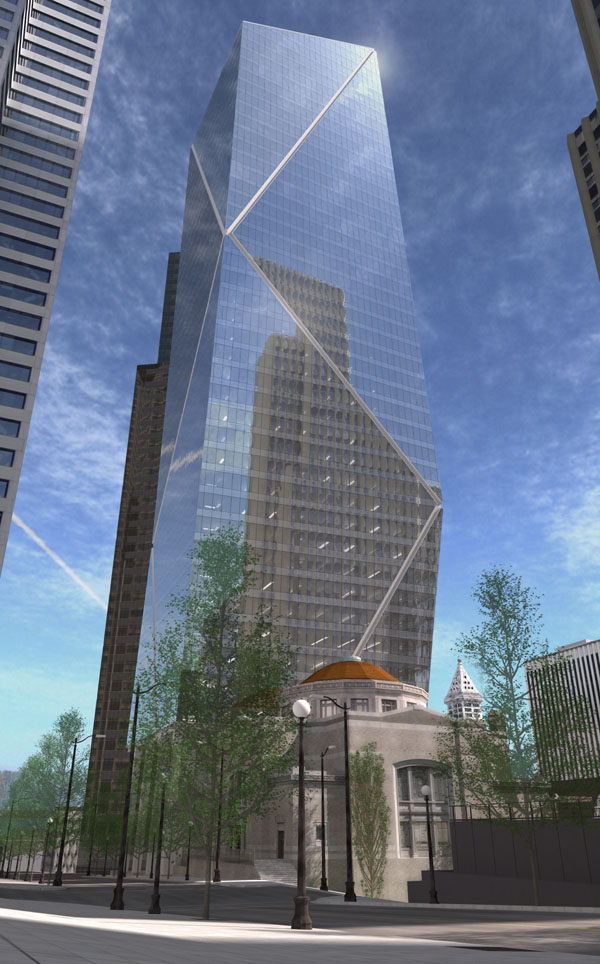C200: How Preservation Ethos Plays Into A Great City

< As part of a 2007 development deal for the tower rendered above, downtown Seattle's First United Methodist Church - completed in 1910 -was saved from demolition. >
I often have to dispel the common assumption that preservation is about saving old buildings. That’s partly correct, but falls well short of what the movement actually represents. I’m sure the notion of saving buildings that resides in many of the public resulted from either reading about efforts to save a particular building, or their own involvement in a struggle to save a school, church, favorite building or whatever.
Preservation traces its modern roots to the saving of Mount Vernon. But today the issue for preservationists is less about saving a particular building or even a whole neighborhood district. It’s about “placeâ€. Place does matter.
So what is place? It’s the combination of factors that make any collection of buildings special whether it’s your own neighborhood, or the Pike Place Market. Yes there are buildings that help create that “place†but it goes much deeper. Place happens in neighborhoods and communities whether there is a historic building or not. But for preservationists the built environment is the glue that holds it together.
The preservation movement has understood for some time it’s not just about saving a historic building as a stand-alone effort. It’s about making sure that the special qualities that define an area are preserved along with the important examples of architecture so future generations can enjoy the place.
After all, sustainability starts with preservation.
>>>
Kevin Daniels is President of Daniels Development, and serves on the Board of Trustees for the National Trust for Historic Preservation in Washington, D.C.

